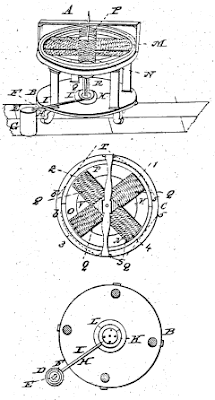Good morning,
Whitewater’s forecast calls for a mostly sunny day, with a high temperature of twenty-six degrees.
In our schools, it’s Beach Day at Lincoln Elementary School, proud home of the Leopards. A Book Fair continues today at Washington School.
There’s an update, of sorts, on Whitewater Police Chief Coan’s candidacy for the public safety director’s post in Mankato, Minnesota: one of the other candidates has dropped out of the running. The Mankato Free Press, in a story entitled, “Public Safety Finalist LaDue Says I Don’t Want Job,” reports that
One of four finalists for Mankato’s public safety director job has withdrawn.
Owatonna Police Chief Shaun LaDue sent notice to the city that he no longer wants to be considered as a candidate for the position, being vacated at the end of March by Jerry Huettl’s retirement. LaDue said information he received while visiting Mankato with the other three candidates last week made him realize he wasn’t the right person for the job.
“A significant part of that thought process had a lot to do with the responsibilities within the Fire Department — an area that I have little or no experience with,” LaDue said in an e-mail.
Another candidate “would be a stronger choice based on the immediate priorities and demands of this position,” he added.
“The department has not had much of any change for several decades and, as a result, I feel that I simply am not the right candidate at this time,” La Due said. “As I look toward the final one-third of my law enforcement career, I envisioned something different.”
It’s the last paragraph of the excerpt that offers an indication (as did an earlier story in the Free Press on Mankato’s Joint Civil Service Commission) about how the search will likely go.
Today’s a historic day in American — and world — science. On this day in 1837, Thomas Davenport received a patent for the electric motor. In Feb. 25, 1837: Davenport Electric Motor Gets Plugged In, Wired describes Davenport’s remarkable achievement:
Davenport was a Vermont blacksmith and an amateur tinkerer, not a trained scientist or engineer. When he heard about a machine that used an electromagnet to separate high-quality iron ore from the lower-grade stuff, he became intrigued. Unable to meet with the inventor, he sold his brother’s horse and a number of other possessions to buy an electromagnet of his own.
Like many Wired readers, Davenport then proceeded to take apart the nifty gadget he’d just bought in order to find out how it was made. Soon he was making his own batteries and electromagnets, and in half a year had come up with a motor powered by direct current from a galvanic wet cell.
Davenport’s wife, Emily, maintained notes for him and even suggested modifications and materials to be used in his experiments. She also contributed strips of silk from her wedding dress to use as insulation for the wires.
The brush-and-commutator scheme Davenport invented is still used in electric motors today. Current flows through electromagnets mounted on a wheel, causing them to move towards fixed permanent magnets, rotating the wheel through a half turn. As the wheel turns, its motion breaks the circuit powering the magnets and connects a new circuit with opposite polarity. That in turn reverses the polarity of the electromagnets, pushing each one away from the magnet it’s just passed while pulling it towards the next magnet in the circle, thus pushing the wheel through another half turn. The process repeats, and the wheel on the motor goes round and round.

